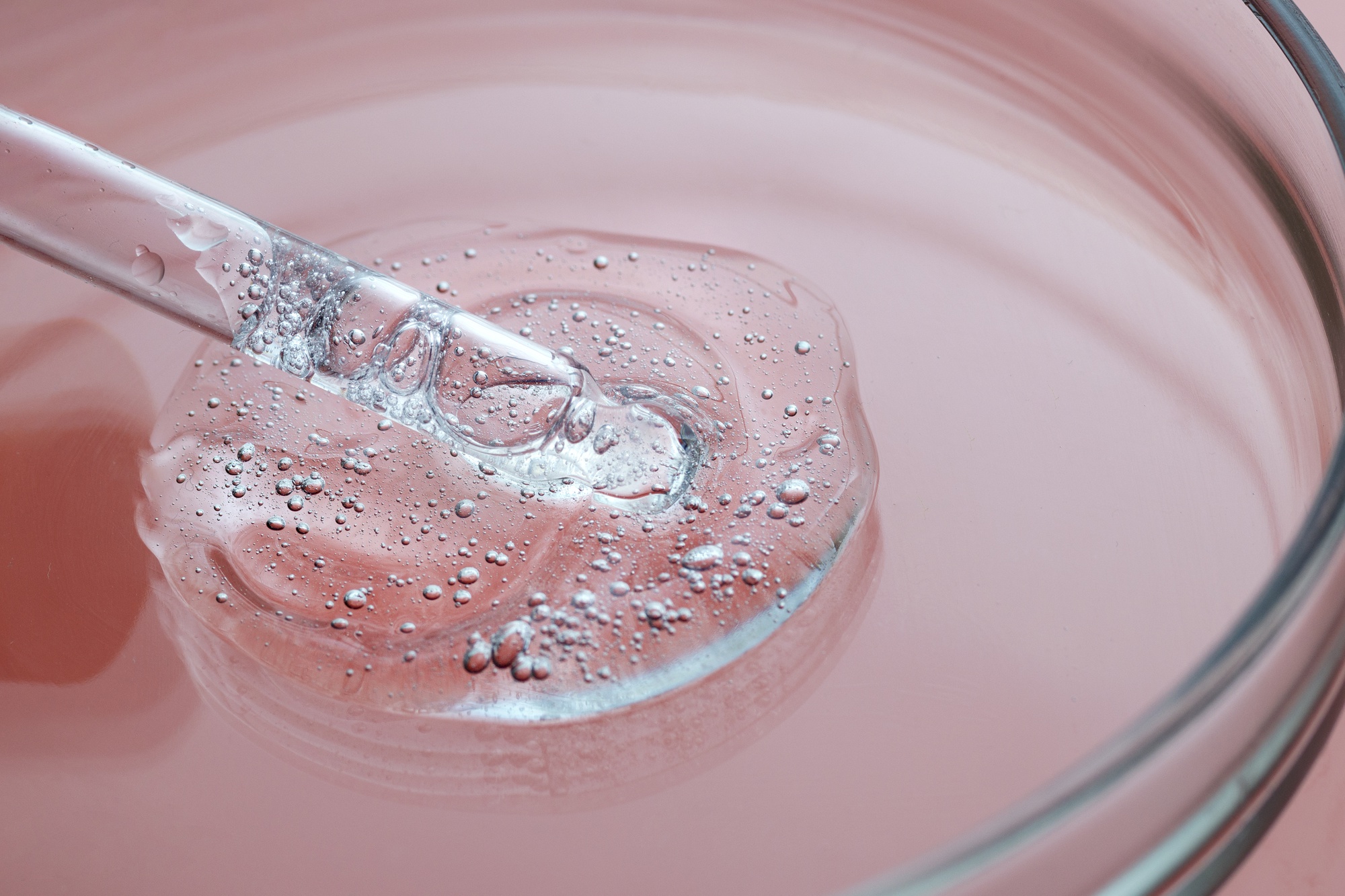Scientists Develop a Skin-Like Hydrogel That Repairs 90% of Wounds in 4 Hours and Fully Heals Within 24 Hours

Picture a world where the materials we create don’t simply endure damage but actively repair themselves, much like the human body. This vision, once thought to be beyond our reach, is now becoming a reality.
Scientists have developed a skin-like hydrogel that not only mimics the flexibility and strength of human skin but also possesses the extraordinary ability to heal itself. This breakthrough material can repair 90% of its wounds within just four hours and fully restore itself within 24 hours. It is more than just a scientific advancement; it serves as a powerful reminder of resilience in action.
This hydrogel represents a future where technology and biology converge, where the healing power of nature is embedded into human-made materials. It challenges the conventional understanding of what is possible and, in doing so, offers a profound lesson: just as these materials can be designed to heal, so too can we tap into our own potential to heal, grow, and overcome life’s challenges.
The Marvel of Human Skin

Human skin is more than just a protective barrier—it’s a masterpiece of nature. This resilient organ seamlessly balances strength and flexibility, standing firm against external damage while adapting to movement and environmental changes. Its most astonishing feature, however, is its innate ability to heal itself. Within mere hours of an injury, skin begins a meticulous repair process, knitting itself back together without missing a beat.
For scientists, replicating these extraordinary qualities in synthetic materials has been nothing short of a monumental challenge. The combination of durability, elasticity, and self-repair remains unmatched by artificial attempts, which often succeed at imitating one property while falling short in others. Gels, the closest contenders, mimic skin’s texture but lack its robustness or regenerative capacity.
Challenges of Creating Skin-Like Materials
Human skin is nothing short of extraordinary. It’s both tough and flexible, a perfect balance of strength and elasticity. But what truly sets skin apart is its remarkable ability to heal itself. After an injury, skin doesn’t just recover; it regenerates, often fully restoring itself within a short period. For years, scientists have attempted to replicate these remarkable qualities in artificial materials, but there has always been a catch. While some materials could mimic skin’s stiffness or its healing abilities, none could replicate both in harmony.

The challenge lies in creating a material that combines two seemingly opposite qualities: strength and self-healing. Stiffness provides durability and resilience, while self-healing allows for the restoration of integrity after damage. These properties are both essential to a material that could serve real-world functions such as artificial skin or robotics. Yet, for years, scientists faced the dilemma of how to balance these two qualities without compromising either.
This innovation offers a solution—a material that not only maintains the stiffness of human skin but also repairs itself with remarkable speed. Just as we face struggles in life that challenge our strength and resilience, the creation of this hydrogel reflects a breakthrough in overcoming an obstacle that seemed impossible. By blending science with nature’s wisdom, this material brings us closer to the next frontier in material design—one where strength, flexibility, and healing coexist.
The Breakthrough: How Nanosheets Make the Hydrogel Strong and Self-Healing
At the heart of this remarkable advancement is a seemingly simple yet powerful scientific approach: polymer entanglement within nanosheet confinement. The process involves embedding ultra-thin clay nanosheets into the hydrogel, creating a unique structure that enhances both its strength and its self-healing capabilities.

Hydrogels, traditionally known for their softness and flexibility, are made up of water-absorbing polymers. However, these materials have always struggled with one key issue—combining their squishiness with strength. This new breakthrough changes that. By adding nanosheets to the hydrogel’s structure, scientists have created a material with a highly ordered arrangement of molecules, which not only strengthens the hydrogel but also enables it to repair itself when damaged.
The secret lies in the way the polymers are entangled between the nanosheets. These polymers twist around each other, like fibers woven together, forming a structure that is both robust and flexible. This intricate polymer network is dynamic at the molecular level, meaning that when the material is cut or damaged, the polymers move and rebind themselves, allowing the material to heal. It’s as though the hydrogel has learned to fix itself—automatically and efficiently—just like our own skin.
This entanglement process is akin to nature’s own ability to rebuild, drawing inspiration from the biological systems that have evolved over millennia. It’s a reminder that sometimes, the greatest solutions are found by simply understanding and replicating nature’s methods. Just as our bodies adapt and repair, this material has been designed to mirror that process, bringing new possibilities to fields like medicine, robotics, and beyond.
A Step Into Real-World Applications

This hydrogel isn’t just a marvel of science—it’s a technology with the potential to transform entire industries. Its ability to heal itself could have profound impacts in fields such as medicine, robotics, and even artificial skin. In the world of healthcare, this hydrogel could be used in wound healing, acting as a bandage that not only protects the injury but also accelerates the recovery process. Imagine using a material that mimics the human body’s healing capabilities to treat cuts, burns, and other injuries more effectively, without the need for constant reapplication or additional treatments. This would drastically reduce the risk of infection and speed up recovery times, providing a new tool for medical professionals.
Beyond wound care, this self-healing material could also play a key role in drug delivery systems. Its ability to repair itself could help in creating more effective, long-lasting delivery mechanisms for medications, especially in the treatment of chronic conditions or in cases where the medication needs to be delivered over an extended period of time.
The possibilities extend even further in the realm of soft robotics. Robotics has long faced the challenge of creating flexible, yet durable machines that can withstand the wear and tear of their environments. This hydrogel could provide the perfect solution. Soft robots made from this material could “heal” from minor damage during operation, making them more efficient, reliable, and long-lasting. These robots could be used in delicate environments like medical surgeries, or even in hazardous conditions where they might encounter damage that traditional materials couldn’t withstand.

In all these applications, the hydrogel’s capacity to heal itself isn’t just a technical achievement; it represents a shift in how we approach design and problem-solving. Rather than constantly replacing or repairing damaged materials, this breakthrough allows us to create systems that repair and regenerate naturally—just like the human body. This is the essence of bio-inspired technology—learning from nature and applying those lessons to create solutions that not only benefit us today but pave the way for a more sustainable future.
What This Breakthrough Teaches Us
At its core, this hydrogel is more than just a scientific breakthrough; it’s a powerful lesson in resilience. The hydrogel’s ability to heal itself mirrors something we all experience in life—pain, damage, and the need to recover. But much like the material, the path to healing isn’t always easy. It requires time, the right conditions, and the understanding that, even when things seem broken, recovery is possible.
When we look at this hydrogel, we’re reminded of our own potential to repair ourselves, both physically and emotionally. The process of healing, whether for a material or a person, isn’t always immediate. It requires patience, but it’s a testament to what’s possible when resilience and strength are combined. Just as the hydrogel’s polymers reconnect and rebuild, so too can we reconnect with our inner strength to overcome challenges.
This lesson extends beyond individual healing. Think about the world around us—society, communities, relationships. Just as materials can be designed to regenerate, so can we build systems and communities that heal and grow stronger after hardship. We are not defined by the damage we experience, but by our capacity to adapt, recover, and emerge stronger.
The self-healing hydrogel stands as a symbol of what happens when we allow ourselves to grow through adversity. Its very existence challenges us to reconsider what is possible when we embrace the process of healing—whether in materials, in ourselves, or in the world we are creating together. This breakthrough isn’t just about creating smarter materials; it’s about building a more resilient future, one that heals and transforms, much like the hydrogel that regenerates before our eyes.
The Power of Healing and Moving Forward

The self-healing hydrogel represents more than just a scientific achievement; it’s a profound symbol of resilience. Just as this material repairs itself after damage, we too possess the capacity to heal and rebuild after life’s challenges. The breakthrough in creating a material that mimics human skin’s ability to regenerate is a reminder that recovery isn’t just possible, it’s inherent in the process of growth.
Looking ahead, the potential applications of this technology are vast—whether in medicine, robotics, or even artificial skin. But the greatest lesson we can take from this is not just about what the material can do, but what it teaches us about our own power to heal. The self-repairing hydrogel shows us that, like the material, we can recover from setbacks, emerge stronger, and create a future where resilience is built into everything we do.
As we embrace the lessons of resilience and healing embedded in this breakthrough, we are reminded that the path to growth is often marked by recovery. Just as this hydrogel repairs itself, we too can take inspiration from its ability to rebuild and regenerate—both in the materials we create and in the lives we lead. The future belongs to those who understand the power of resilience and the transformative potential of self-healing.
Featured Image Source: Freepik
Source:
- Liang, C., Dudko, V., Khoruzhenko, O., Hong, X., Lv, Z., Tunn, I., Umer, M., Timonen, J. V. I., Linder, M. B., Breu, J., Ikkala, O., & Zhang, H. (2025). Stiff and self-healing hydrogels by polymer entanglements in co-planar nanoconfinement. Nature Materials. https://doi.org/10.1038/s41563-025-02146-5
Loading...






